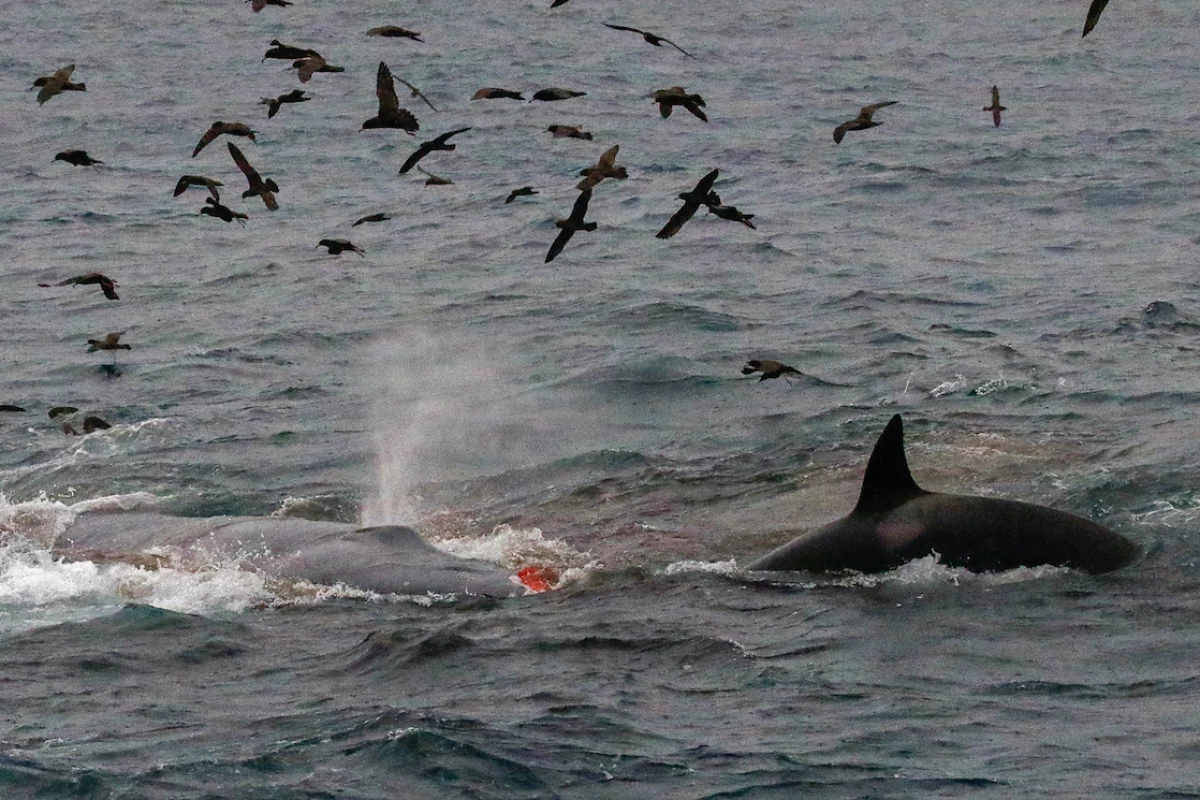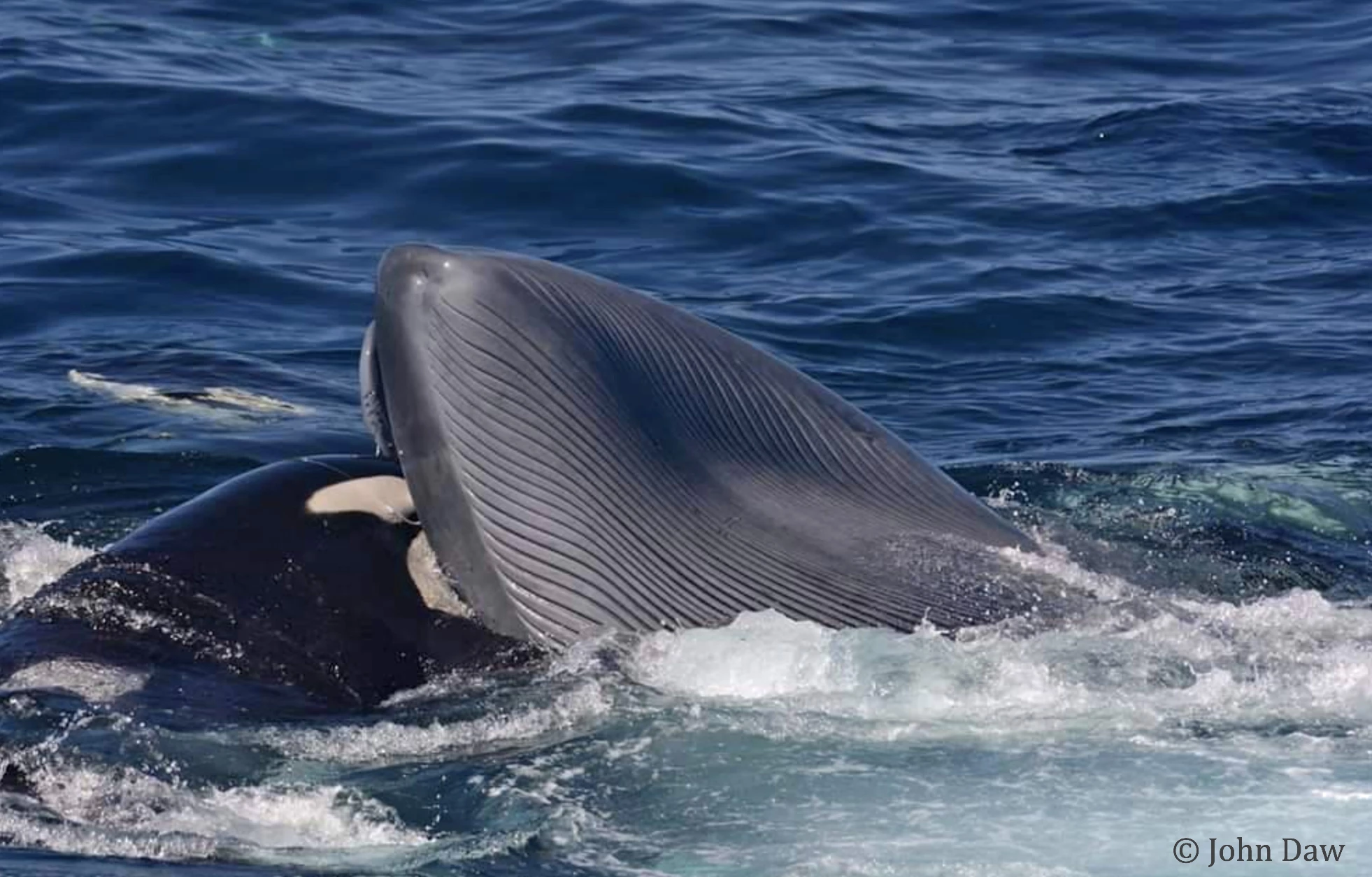Along with eating animals such as fish and seals, killer whales (aka orcas) are also known to hunt down some types of whales … hence their name. For the first time ever, however, there has now been a documented case of them killing and eating the largest animal in the world – an adult blue whale.
Although it's the subject of a study which was announced just this week, the attack was actually witnessed in March of 2019 by researchers from Australia's Cetacean Research Centre (CETREC) and Project ORCA.
The scientists were in boats, conducting annual whale and dolphin surveys near the Bremer sub-basin off the south coast of Western Australia. A population of approximately 140 killer whales is known to seasonally move through the area, some of them staying year-round.
"When we arrived about 14 killer whales were attacking the blue in 70-m [230-ft] waters, with the female killer whales leading the attack," said team member Isabella Reeves, who is a PhD candidate at Australia's Flinders University. "At arrival we already noticed a substantial flesh wound on the top of its head with bone exposed. The dorsal fin was missing, no doubt bitten off by the killer whales. Tooth-rake marks were evident in front and behind where the dorsal once was and even all the way to the whale’s tail."

In what is described as a coordinated attack, some of the killer whales rammed the sides of the larger animal, biting off chunks of skin and blubber, while others went after its head. After the carcass sank, approximately 50 killer whales remained in the area to feast on floating pieces of flesh.
Some of the same orcas were seen killing a blue whale calf just two weeks later, with another such attack being observed last year.
"This study, combined with our recent research, highlights the need for increased understanding of killer whale population ecology so we can better determine their impact on the marine ecosystem in Australian waters," says the lead scientist, CETREC's John Totterdell.
Source: Flinders University





